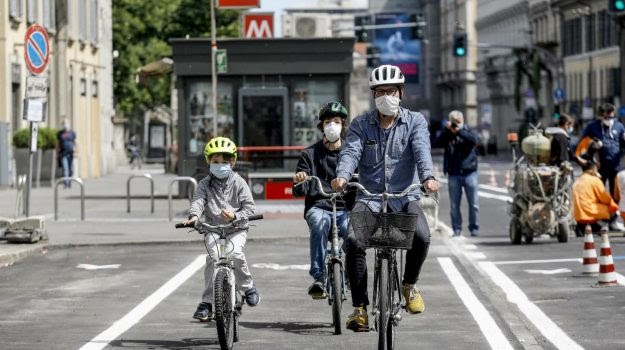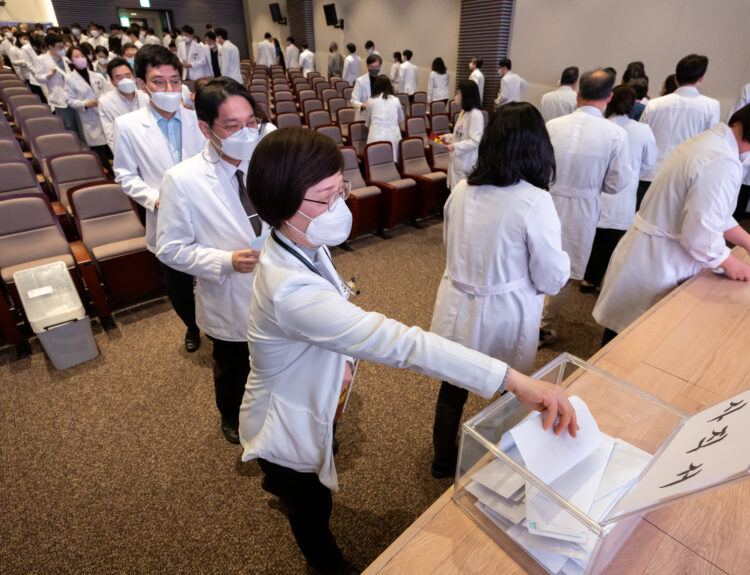Italy, a country usually associated with wine, pizza and pasta, now mostly appears on the news for being the first severely hit country by Covid-19, outside of China. Italy was also the first country to surpass China’s death toll with almost 28.000 deaths as of the 7th of May. Most of the Italian population has been in lockdown for 50 days or less depending upon the region. Lombardia, the epicenter and hardest-hit region in Italy, has been under lockdown since the 10th of March.
The first time I heard the news of my own country being in lockdown, especially how hard Lombardia was hit by the virus, it was hard to process. It made me wonder about the mental and physical effects of such a lockdown on the Italian people. What will my fellow university students do with their exams, theses, and graduations? What about the workers? What will be the outcomes of the widespread practice of working from home? And, as easy as it is to only focus on the negative effects of this terrible first half of 2020, has this lockdown brought about any positive changes for Italy?
“Life after lockdown will never be the same”
Interviews with students and workers in Italy present several negative and positive viewpoints. Many reveal distrust towards the decisions taken by the current government and Prime Minister Giuseppe Conte. Up to 36% of the Italian population has little or no trust at all in the medical advice and information they receive from their government. That could translate into not adopting the crucial government advice to stop the spread of COVID-19, especially when it is voluntary rather than compulsory. It is also expected that criticism against the Italian government for its slow reaction will continue to grow, and some are concerned about the negative impact on the environment once the manufacturing sector will attempt to save the economy.
The rise of new technologies
After the lockdown started to ease with the second phase, Prime Minister Conte seemed to start being more and more appreciated. Positive feedback highlighted the unity that this pandemic has brought about in Italians, perhaps even creating more trust in the choices made by the government. As of May, 60 percent of respondents in Italy trusted Prime Minister Giuseppe Conte, with 76% of approval. What was truly appreciated was the fact that he seemed honest and humble while facing a crisis like none seen before. Many changed their mind throughout the second phase when the lockdown was less strict, because of the decisions he made at the beginning of the Covdi19 emergency. His decision to lock down the entire country seemed too drastic for many at first, but after the number of cases stabilized and slowly started to diminish, his popularity started to rise.
A second positive impact Italian citizens have spoken about is the introduction of new technologies. The use of Zoom, Houseparty, Teams, WhatsApp, Facebook Messenger, and others has improved many people’s quality of life. Before the lockdown, the use of these online portals, expanded on smart working, was only in very specific circumstances, since Italians prefer skinship and face to face meetings.

(Italian Prime Minister Giuseppe Conte/Photo via ilmeteo)
University student point of view: Changes in the academic environment
Maria Cristina Cosso, a 26-year-old student from Merano, a city in the very northern part of Italy, was unable to return to university in Verona. She took her first online exam last week after an entire semester of pre-recorded lectures and Zoom classes. As the last semester before graduation, these exams are extremely important. “I am very happy to have something to do during this lockdown, instead of always cooking and eating! Pre-recorded classes are actually very useful, being able to stop and rewind whatever the professor said makes it easier to understand.” This innovative method of pre-recorded classes has not only helped students take more precise notes but also review difficult explanations even months later, giving the student a bank of available information throughout the entire semester. Most Italian universities have one final exam in which students are expected to summarize the entire material covered during the semester, so a majority of students attend classes (even if attending classes is not compulsory) to record it using voice recorders in order to re-listen to lectures. In fact, increasing numbers of institutions have begun to implement this for the benefit of non-native or dyslexic students, or really any student who may want to rewatch lectures in their own time for revision or notetaking purposes.
Embracing new technologies like this would present a challenge especially for an older generation of professors, but the University should provide training courses that would help professors understand and learn new ways of teaching. According to the 2016 Digital Study Trends Survey, four out of five college students in the US think that digital learning technologies have improved their grades. Up to 69% of students think that digital technologies help them focus better. The most appreciated methods are adaptive learning technologies and online quizzes. Starting with simple pre-recorded classes which as said before could be a beneficial new technology for students, the same way is adaptive learning where the difficulty of the material adapts to the skills of the student. 94% of university students state that digital learning technologies help them to retain new concepts. Furthermore, dealing with new technologies also represents a good opportunity for the student to acquire meaningful IT skills that could be helpful in their future job.
A slowly adapting country
Italy is a slowly changing country when it comes to technological change, our bureaucracy is famous for being one of the most complicated in the world. Almost nothing is done online and even when given the option people often prefer doing things in person because it would be the fastest and easiest way. From obtaining a passport to renewing your driver’s license, even small errands usually take up your whole day. Because there is less reliance on the internet, there is a lack of free public wifi. It is rare to find coffee shops or restaurants in Italy that provide free wifi, let alone public spaces like metro stations. Additionally, the majority of the Italian population is older, with 22.8% of the population being over 65. This causes its citizens to be very attached to tradition and cling tightly to how things were done in the past. This lockdown has brought a significant change in the academic environment, which was the first sector swept up by the new technological wave. Right after universities and schools, office workers were next to find fitting solutions that would assure the safety of their workers. It seems that school may never go back to how it was before the pandemic, temperature checks will be done every day at the beginning of class, every teacher will get tested, masks will be necessary to enter the school facility and there was also the idea of putting plastic screens around each desk.
Introduction of smart working: Changes in the work environment
Filippo Vaghi is working as an Automation Engineer at a company in Lombardia, the hardest-hit region in Italy. It has been 42 days since he started working from home using Microsoft Teams to communicate with his colleagues. “Being able to work and not having to wake up early and suffer during rush hours here in Milan, is definitely the positive side of smart working!” Milan has a population of 1.3 million people that are constantly on the move by car or train. This has always been a challenge for those like Filippo, who travel across the city twice a day during rush hour for work or school, an average 51 minute rush hour commute. Adding all the additional time spent in the car during rush hours in Milan on average, Filippo loses 6 days and 5 hours per year to commutes.
“I hope that in the future, once everything is over, rotating shifts and one or two days a week dedicated to working from home will become an option.” This change would represent a big step towards a “Google-like company”, being able to take naps to enhance the worker’s performance, bringing their pet to work, or having meetings in a tent, providing new and modern services to its workers. “After 42 days of only smart working, I can assure you that there is a negative side to it, especially when it comes to working hours. If others have a last-minute question they can always call or text thinking that, ‘oh well he is at home anyways!’”
The Italian government and new technologies
The way the Italian government has dealt with instructing the population about new restrictions and measurements during this lockdown was through broadcasts by Prime Minister Giuseppe Conte. The Italian prime minister has always shown a humble and very honest side when communicating with the Italian population. Honesty and transparency from the government seemed to be the most important component when building trust with the population. The President of France Emmanuel Macron and the British Prime Minister Boris Johnson have adopted the same means of communication, reassuring their population through live or recorded videos broadcasted on TV, much like Prime Minister Conte, showing a humble and honest side to obtain their trust and collaboration. We can see that in the case of South Korea, in which the government asked for total trust from the population and in exchange, the transparency of the government has been total, especially by sending messages of the movements of every positive case and coordinating with the population in order to keep most of them safe.

(The app “Immuni” and how to use it/ Photo via Repubblica)
The introduction of a tracing app
A further effect of this pandemic was the introduction by the ministry of technological innovation of an app called “Immuni” that if downloaded could trace the last movements using the GPS of the phone, simulating the way the Korean Government has dealt with the virus. It meets the European criteria since it is voluntary, anonymous, and uses Bluetooth technology. To assure the usefulness of this app, at least 60% of the population has to download and use this app. In order to reach such a high percentage, full collaboration of the government will be needed, starting from making clearer for the population how such an app works, emphasizing the biggest concern that can surround such an app, which is individual privacy. This app was chosen back in April and further developed by Google and Apple recently, perfecting it for a new release on the 3rd of June. It will be released and tested in one region each in the north, center, and south of Italy.
In fact, the “Immuni” app identifies through Bluetooth if two phones come in close contact, less than 1 meter, and keeps track of it. In the case a person tested positive for the virus it will be easier to detect who could possibly be infected. All this in total anonymity: once downloaded, actually, the Immuni app records contacts in the form of encrypted identification codes. This would be the first time for Italy to use an app to improve its healthcare services. Once downloaded and tested it could be used not only for Covid19 but in the event of another virus in the future.
Changes in the environmental policies
When considering the positive effects of such a long lockdown, the environment seems to have benefitted from it. The drop in production by many companies and the drastic reduction in car usage due to restrictions imposed by the government have led to reductions in air pollution. It has happened especially in Lombardia, which also represents the center of Italian’s economy with its center located in Milan. Milan has always been one of the most polluted cities in Italy, making experts think that the negative effect of pollution for years contributed to the fast and deadly spread of Covid in this region. During the first half of 2020, pollution has dropped 10% each week during the first 4 weeks. That is why the city of Milan seems to be determined to change the habits of the population by reducing the use of cars, transforming about 35km of the street in cycle lanes. This project is called “Strade Aperte” and will be put into action this summer when hopefully the pandemic will be under control or even better gone.

(A family enjoying better air quality in Milan/ Photo via gazzettadelsud)
What about the future?
The presence of such a catastrophic pandemic in the world will, very likely, forever change our lifestyle. It is very hard to predict what is going to happen even only in the near future since the possibility of a second wave is still around the corner. What will be seen is a bigger change in the work environment, working from home at least half of the week will be a change that will remain in many companies. It would benefit not only the employees giving them the commodity to work from home. The same would go for the company, fewer people would be physically in the office, presenting a small treat of carrying the virus or just a simple seasonal flu. This would have an amazing impact on the environment, especially in very polluted cities like Milano, improving drastically the air quality which translates in a better quality of life for the future. The last few months have presented what feels like an endless sea of tragedies, not just for Italy but globally. Yet, even amidst our grief, positive changes can occur as well. And if we focus on thoughtfully shaping those changes, guiding them, we can ensure that the altered world we are building will be a better one for us all.
Anna Ferrera is a graduate student at Yonsei Graduate School of International Studies. She holds an Italian BA from the University of Verona, Italy.
- “I Love My Body”: Hwasa and Female Empowerment in K-Pop and Korean Society - May 6, 2025
- English Fever in South Korea - February 24, 2025
- South Korea’s Medical School Expansion – Cure Worse than the Disease? - October 20, 2024






